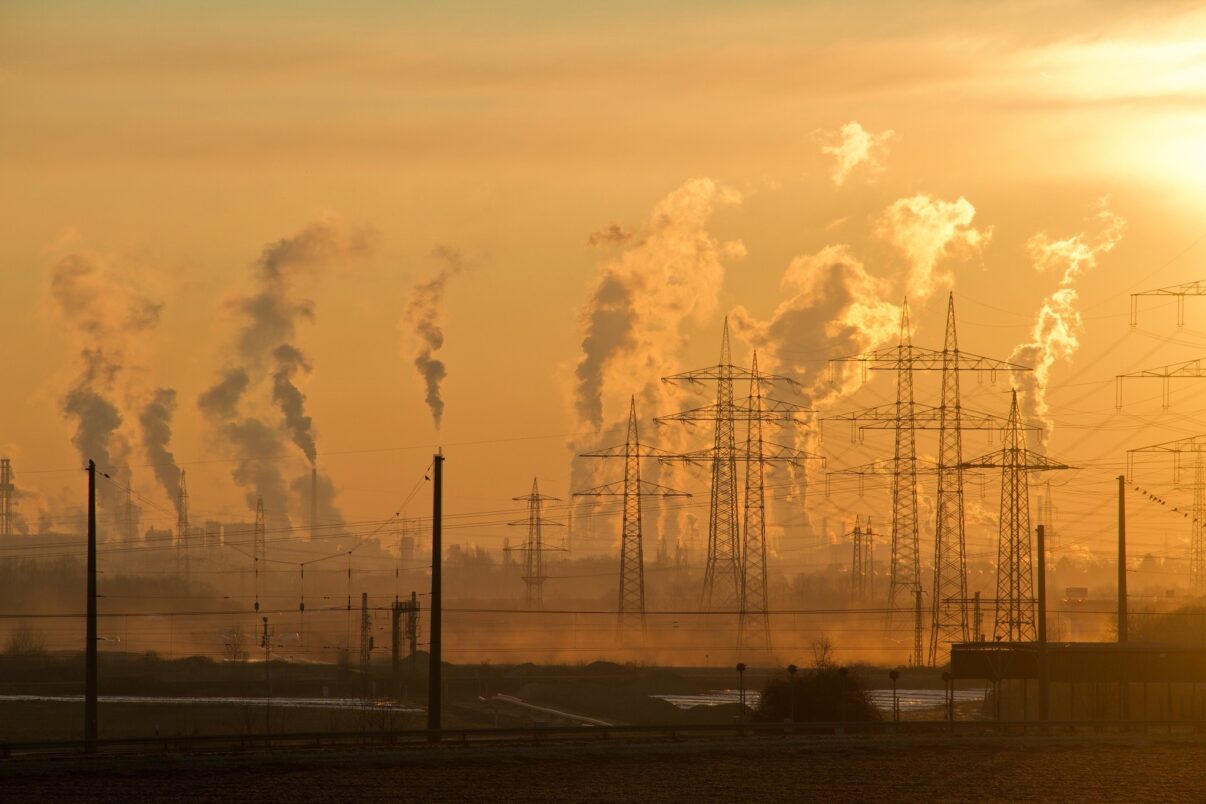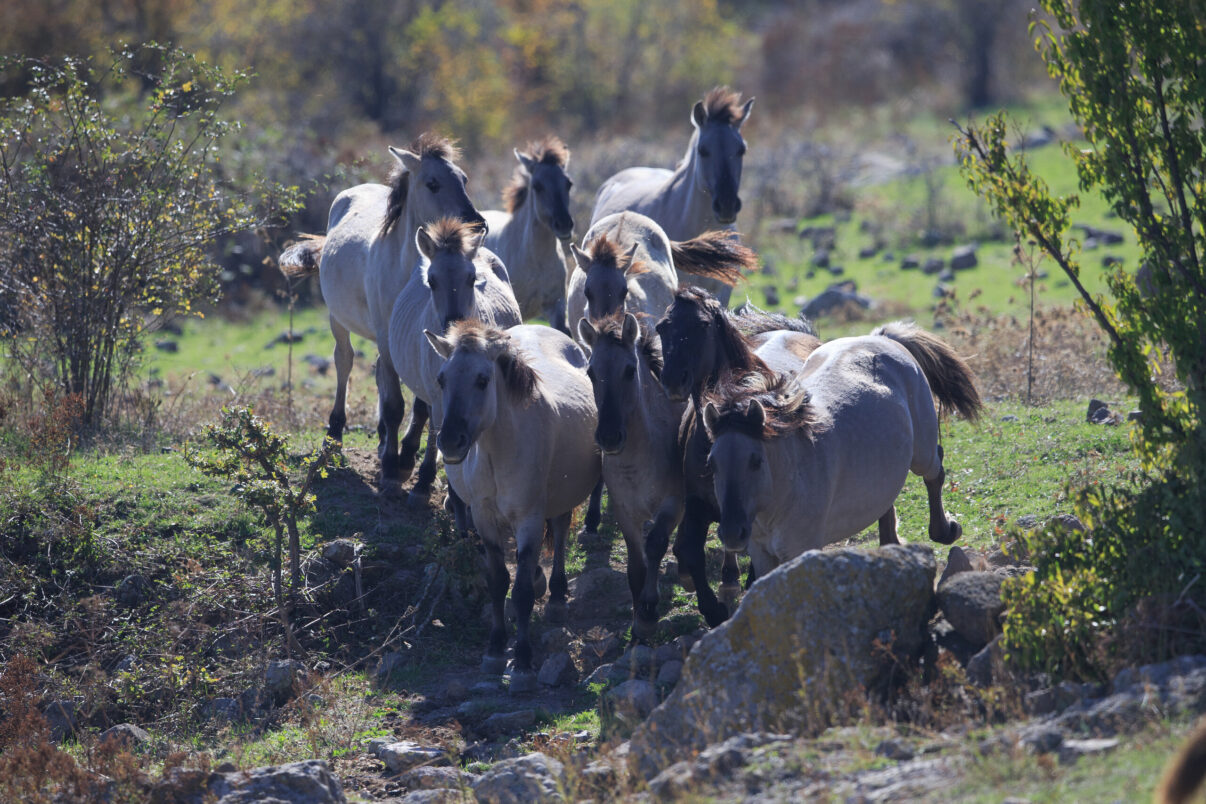This article is written by Fedra Herman, the author of The Wandering Biologist Blog. Fedra is a Belgian MSc of Conservation Biology graduate from The University of Queensland, passionate about writing and nature restoration. As a member of the European Young Rewilder’s Communications Team, she hopes to help spread knowledge about rewilding and inspire others to restore, protect, and cherish our planet’s ecosystems.
As temperatures rise and droughts become more extreme on Planet Earth, the world as we know it is changing. Even though humans have been on this planet for only a short while, our impact has been immense. It might seem improbable, but the way we have been living our lives has altered one of nature’s most powerful forces: fire.
Wildfires are a natural phenomenon in many ecosystems and species evolved alongside this ever-present threat. However, wildfires are becoming more frequent and intense [1]. Their insatiable hunger devours everything in their path; creating charred landscapes and displacing creatures, and humans, from their homes.
You might still remember the images on the news from the 2019/2020 bushfires in southeastern Australia. Because of these bushfires, more than 14 million hectares went up in flames [2]. And it’s not only Australia that has had to deal with more extreme fire events in recent years. In Europe, the worst wildfire event ever recorded occurred in 2022 and destroyed approximately 660.000 hectares across multiple countries, including Croatia, Spain, Portugal, Germany, The Czech Republic, France and Greece.
“Not only does it seem like these fires are getting larger, more deadly, and more frequent, it seems like they’re becoming more common across the globe”
In this article, we will explore the reasons behind the changes in fire regimes across the planet and look for potential solutions. Spoiler alert: It seems that wild goats, horses, and cattle, are the heroes of this story.
To avoid confusion, here are some basic definitions related to fire ecology you need to know:
- Fire regimes are characterized by the frequency, intensity, size, season, and severity of fire over time.
- Fire frequency refers to the time interval between two consecutive wildfire events in a particular area.
- Fire intensity refers to the energy (or heat) released during a wildfire event. This is related to flame length and the rate of spread of the fire.
- Fire severity refers to the impact on ecosystems of the fire event.

Why are wildfire regimes changing?
Before trying to solve an issue, it is essential to understand the underlying cause. So, let’s start at the beginning: Why are wildfires becoming more frequent and intense?
A changing climate
The most obvious explanation for the change in wildfire regimes is anthropogenic, or human-caused, climate change [3]. As summers become hotter and rain remains absent for longer periods at a time, the risk of wildfires increases. Fixing the global climate issue shall require fundamental change across all aspects of society; we have to change the way we grow food, eat, use land, consume, produce energy and transport ourselves.
Unfortunately, these necessary transformations are not receiving the urgency and attention from governments they require. As individuals, we have some power to create change, but reaching zero emissions can only be achieved with the necessary political change. So, while we are anxiously waiting for politicians to finally see the light and reduce greenhouse gas emissions, we need another solution to mitigate wildfire risk.

Exterminating fires and herbivores
Fire needs fuel. If there is nothing to burn, there can’t be a fire. Thus, the second cause of more intense wildfires is simply the build-up of fire fuel, i.e. vegetation and other types of flammable plant material. There are two reasons why the fuel load has increased so much in recent years: the exclusion of fire by humans and the absence of natural grazing, a consequence of past human behaviour.
In densely populated areas, humans often try to prevent the occurrence of wildfires by suppressing them. However, when fires are excluded from an ecosystem for too long, vegetation and flammable materials accumulate over time, resulting in a dense layer of fuel. All it needs is one spark to ignite a fire more intense and severe as would naturally occur.
Furthermore, a vital ecosystem service is missing from many of our landscapes, namely, natural grazing. In a previous article, I mentioned the absence of large herbivores, the natural fire fuel removers, from most European landscapes (and other parts of the world). When humans spread across the globe, a wave of megafauna extinctions followed in their footsteps [4]. The loss of wild herbivores in North America and Europe was soon followed by a change in the fire regime. Without large grazers, the frequent low-intensity fires shifted to high-intensity crown fires [5].
With the rise of traditional farming practices, domestic cattle and horses were encouraged to roam across landscapes and these animals quickly took over part of the wild grazers’ job. But land-use change in recent years removed this final fuel control mechanism. Traditional farming practices are becoming less attractive to young people, and farmland is being abandoned on large scales across Europe [5]. In addition, intensively managed farms outcompete the more traditional practices, such as pastoralism. In the absence of freely roaming wild and domestic herbivores, fire rules.
It seems that, as always, humans are at the root of the problem. On the bright side, that also means humans can help turn the tide around and be part of the solution. The natural world has lost its balance. But, we can bring it back by working together with nature and rewilding our world.
Returning natural grazing to our landscapes
Often when we try to solve a large-scale environmental problem, nature already has a solution. We just have to be willing to embrace it.
In a 2021 study, Rouet-Leduc and colleagues concluded that “Herbivores have the potential to reduce wildfire risk by reducing fuel loads and changing vegetation structure and moisture”. With the help of large herbivores, the amount of flammable plant material will be reduced and a more heterogenous vegetation structure will be created (due to variations in the activity of herbivores), thereby altering the arrangement of fuel in the landscape [6]. Bare patches of vegetation, formed by grazers or large animals creating trails and dust baths, act as barriers stopping the spread of fires. Finally, grazers increase the moisture content of vegetation, lowering the flammability and rate of spread of fires. These effects are most profound when different species of grazing and browsing herbivores (varying in their diet) are combined.
Natural grazing is a cost-effective Nature-Based Solution that can help us mitigate destructive, high-intensity wildfires, especially in areas with dry seasons, such as Mediterranean systems, savannas or dry woodlands [5].

If we want to reduce the intensity of wildfire the answer seems easy enough: we need to return the process of natural grazing to our landscapes. Especially in wilderness areas and extensive regions of abandoned land, the use of (semi-)wild herbivores can be the perfect solution for mitigating intense wildfires.

Trophic rewilding
So, how can we increase the number of wild herbivores? In areas where natural populations of herbivores still occur, we can reduce, or even better, stop, overhunting to allow these populations to bounce back. In Europe, wild grazers have often disappeared, so passive recovery isn’t an option. To bring back the process of natural grazing, these animals have to be reintroduced with the help of humans. This is precisely what trophic rewilding projects seek to do.
Trophic rewilding is all about restoring and protecting the functional roles of animals in ecosystems [7]. All across Europe, people are slowly realising the value of healthy and well-functioning ecosystems and the consequences of the absence of vital components, such as grazing animals.
In the Greater Côa Valley in Northern Portugal, the Rewilding Portugal team has been reintroducing Garrano horses and Tauros since 2006. The Rhodope Mountains in Bulgaria are now once again the home of large herds of European bison, fallow and red deer, and different species of horse, such as Konik and Karakachan horses. Even in more densely populated countries, such as The Netherlands, European bison and Exmoor ponies are again creating more open, mosaic landscapes reducing the fire fuel, and at the same time, promoting biodiversity.

Such reintroduction projects are a great beginning of harnessing nature’s power to prevent intense and destructive wildfires. A recent paper by Schmitz and colleagues even showed how reintroducing and conserving wild animals and their functional roles even enhances natural carbon capture and storage, thereby, contributing to the prevention of severe climate warming [8].
So, it seems that wild grazers are not only tackling one cause of severe wildfires, namely too much fire fuel, but are also fighting against climate change. What incredible animals!
Finally, it is important to remember that wildfires are a part of nature and can have numerous positive impacts on biodiversity and ecosystem processes. Natural wildfires actually promote biodiversity, regulate nutrient flows and maintain certain types of ecosystems [8]. Thus, it should not be our goal to completely suppress them but to avoid the highly damaging wildfires we have been experiencing more frequently. Wild populations of herbivores will do exactly that, while still allowing natural physiological processes to occur.
Resources about natural grazing
There is a whole lot more to explore about the topic of natural grazing. Here are some further resources to help you get started:
- Amazing Grazing; an article by Rewilding Europe.
- Wild grasslands as carbon sinks – an emerging opportunity; an article by GrazeLIFE.
- Grazing to minimize wildfire risk; an article by GrazeLIFE.
- Grazing for Life | Supporting extensive grazing for climate adaptation and biodiversity; a video made by Rewilding Europe and GrazeLIFE.This video is the perfect illustration of the importance and the wide range of benefits of extensive, natural grazing in the landscape and how it can help with some of today’s biggest problems, such as climate change and biodiversity loss. The video also provides background on the problems, related to laws and regulations, regarding the implementation of wild grazing in the EU.
References
[1] Hanan, E. J., Ren, J., Tague, C. L., Kolden, C. A., Abatzoglou, J. T., Bart, R. R., … & Adam, J. C. (2021). How climate change and fire exclusion drive wildfire regimes at actionable scales. Environmental Research Letters, 16(2), 024051.
[2] Fisher, D. (2022). Lecture 3: Managing Fire for Conservation [Slide show]. Conservation & Wildlife Biology course, Master of Conservation Biology program, The University of Queensland, Brisbane, Australia.
[3] Jones, M. W., Smith, A., Betts, R., Canadell, J. G., Prentice, I. C., & Le Quéré, C. (2020). Climate change increases the risk of wildfires. ScienceBrief Review, 116, 117.
[4] Sandom, C., Faurby, S., Sandel, B., & Svenning, J. C. (2014). Global late Quaternary megafauna extinctions linked to humans, not climate change. Proceedings of the Royal Society B: Biological Sciences, 281(1787), 20133254.
[5] Rouet‐Leduc, J., Pe’er, G., Moreira, F., Bonn, A., Helmer, W., Shahsavan Zadeh, S. A., … & van der Plas, F. (2021). Effects of large herbivores on fire regimes and wildfire mitigation. Journal of Applied Ecology, 58(12), 2690-2702.